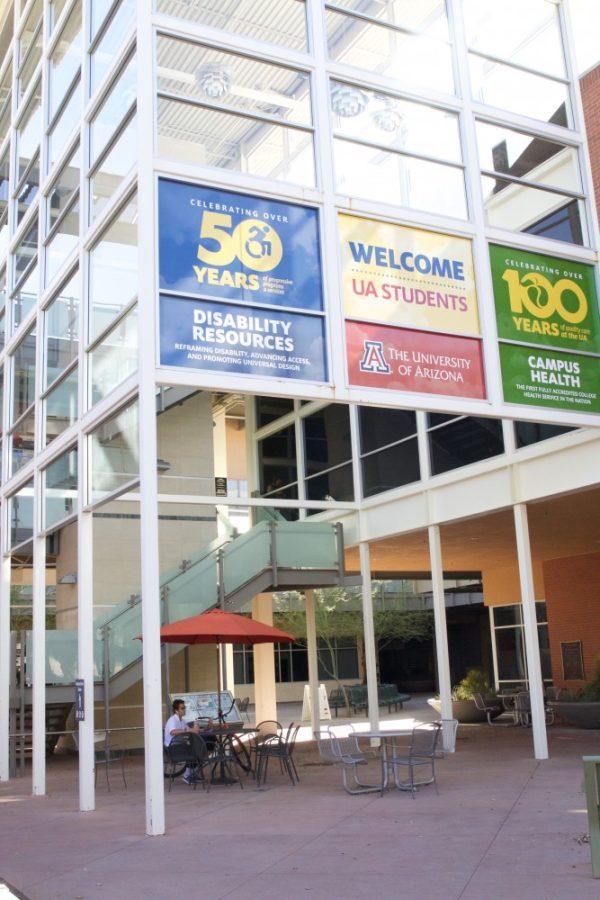The University of Arizona’s fall semester is now close but there are still many uncertainties about reentry during this pandemic.
The Daily Wildcat interviewed David Salafsky, the interim co-executive director of UA Campus Health, about how Campus Health has been and currently is preparing for reentry.
RELATED: Here’s what the Student Union will look like in the fall
Daily Wildcat: How has Campus Health been preparing for UA reopening?
David Salafsky: Yeah, we’ve been really actively involved with it, really for some time now. I think you go back to March and even before, Campus Health was tracking this even as early as January. We were kind of thinking through, we have a rapid response team here at campus health that brings everyone together across clinical areas, non-clinical areas, to try to respond to these types of things. In January, we didn’t know how big this was going to be and how it would turn into a pandemic but we were certainly concerned about it and then going into March we were testing.
By the second week in March, we were testing — PCR testing — for COVID-19. We’ve been very involved with the reentry process in terms of everything from creating a daily well check program for students and employees to actively testing the campus community, members of the campus community for COVID through PCR tests, antigen tests, working closely with the labs across campus or partners with housing and [residential] life. So, there’s been a lot to do in the last several months and I think we’re just trying to do everything we can, too. There’s so much uncertainty, but we’re doing everything we can to keep people safe and really work together to try to address this.
DW: How much access to testing will students have? What testing will students have?
DS: Yeah, there’s going to be a lot of available testing. For students who are moving onto campus in the dorms, they are going to be required to have an antigen test and the way that’s going to work is they’re going to be taking that test just before they pick up their key at move-in. So, a negative test, they pick up their key, they move in.
A positive test, they got a couple options. They could either head home and recover, if they’re local that’s going to be convenient, or there’s going to be isolation housing and that’s at [Babcock Residence Hall], where students can recover there and that obviously protects the health of the rest of the dorm that they had planned to move into. So, a lot of those plans are in place and now we are a few weeks out in terms of school and just making those plans and final preparations.
DW: Will there be designated areas for students with COVID-19?
DS: Yeah so, students have options on that. So, obviously there are a fair number of students who are local to the area whether they are from Tucson or Phoenix, and whether that’s convenient, they can always go home. I mean this is for students who are living on campus specifically. If students are off-campus they probably have a little more flexibility with that since they are renting a one bedroom or they have their own space in a house and there’s more things you can do to self-isolate.
[UA] Housing is working really hard to ensure that for the students of the dorms that we are taking extra precautions to make sure that in a community living environment we got an option for people to isolate until they recover at which point they can move back into the normal dorms.
DW: How are the workers at campus health being protected?
DS: That’s a great question. Yeah, we take this very seriously and from, really, day one of the pandemic — even before it was described as a pandemic — we were really vigorous about infection control insuring that our staff had sufficient [personal protective equipment]. We changed a lot of processes to make sure that their safety was the number one priority. I can give you a couple examples of that. What we’ve been doing since the kind of early days of the pandemic is we’ve been doing drive-thru testing at the circle, the loop behind Campus Health right here and we would batch those tests at one designated time during the day.
So, anybody who wanted to get a test would come at that determined time. It was a little bit later in the day, we moved it earlier as the weather got warmer to beat the heat. That allowed us to do a couple things; it minimized exposure to our staff. They could suit up in PPE, and we could really conserve PPE because people weren’t donning and doffing, kind of changing in and out of all the PPE to do the test as needed. But we batched these at one time and we can be more efficient and we reduce the exposure as a result of that and that really cut the burn rate of PPE, so to speak, so we’re actually conserving our PPE by doing that.
RELATED: UA Confucius Institute closes
At the end of the interview, Salafsky said that Campus Health is working on making changes to their testing so they can make quicker turnarounds on testing results. He said that they will soon be able to get PCR test results back to patients in one or two days.
Follow Jake Toole on Twitter









